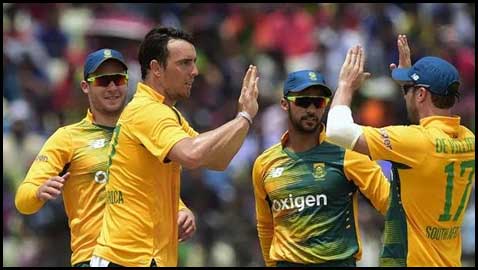The balance between bat and ball, new ODI playing conditions
Last November (2014) Indian opening batsman Rohit Sharma stunned the world when he went out to bat against Sri Lanka in a One Day International (ODI) match at Eden Garden, Kolkata and stayed on the crease till the last ball scoring a record breaking 264 runs off 173 balls ( the highest individual score in an ODI ). Two months later, Mr.360 AB De Villiers of South Africa broke the record of the fastest ODI hundred at New Wanderers stadium, Johannesburg batting against the West Indies and showed the world that there is no such thing as “impossible” left in cricket for batsmen. On both instances the batsmen made a mockery of the opposition’s bowling attack. The point to note here is that modern cricket has become more of a batsman’s game now, and it leaves bowlers with a huge disadvantage. If we look back a decade, the cricket we used to watch then was different from the cricket we watch today. Back in those days a total target of 300 runs was possible but it certainly wasn’t a walk in the park, it was uncommon and of course exciting. A score of 250 was considered to be a decent defendable team total and batsmen looking to smash every ball in to the crowd were not very common, unless the batsmen were Chris Gayle , Shahid Afridi or Sanath Jaysuriya. This is the influence T20 cricket has had on other forms of cricket, particularly in ODIs. Many cricket fans are enjoying the modern cricket game as they get to see a lot more boundaries and sixes and they love it, but the old school cricket lovers are not very happy about it as they see bowling losing its charm in the game. If you are a Test cricket fan then many of you would like to see bowlers dominating the game, but it’s not happening very much at the moment in either ODIs or T20s.
T20 cricket is not the only reason for the downfall of bowlers in the other formats. Flat pitches and modern cricket bats are also benefiting batsmen. Apart from these, alteration in the playing conditions in ODIs during the last few years has harmed bowlers the most. In the last World Cup (2015) we saw batsmen dominating clearly and apart from one or two games most of the close matches were high scoring thrillers. The two new balls in the ODIs ended the possibility of reverse swing and the four fielders rule gave batsmen the luxury to score big in the last 10 overs. Keeping all of this in view, this May the ICC Cricket Committee, headed by former Indian captain Anil Kumble recommended changes in the ICC playing conditions which were later approved by the ICC board during ICC annual conference in Barbados on Saturday June 27, 2015. The key changes made in the ICC playing conditions are:
1. No compulsory catchers in 1-10 Overs (ODIs).
2. No batting power play between Overs 15-40 (ODIs).
3. Five fielders allowed outside the 30-yard circle during Overs 40-50 (ODIs).
4. All no balls, not just foot no balls, will result in a “free-hit” (ODIs, T20s)
ICC chief executive David Richardson mentioned that these amendments were made to maintain a balance between bat and ball, but he also ensured that ODI cricket will retain its attacking and thrilling brand. These new rules have already come into play in the ongoing series between South Africa and Bangladesh. It will be interesting to see how it works. The new rules seem likely to ease a bit pressure from the bowlers back but the batsmen will still try to dominate the game as modern cricket goes. However the two new balls rule will still somewhat benefit the batsmen as it kills the danger of reverse swing. We will soon see how these new conditions will affect ODI cricket, whether the momentum shifts a little towards the bowlers or whether the batsmen will pull it back toward themselves again.

